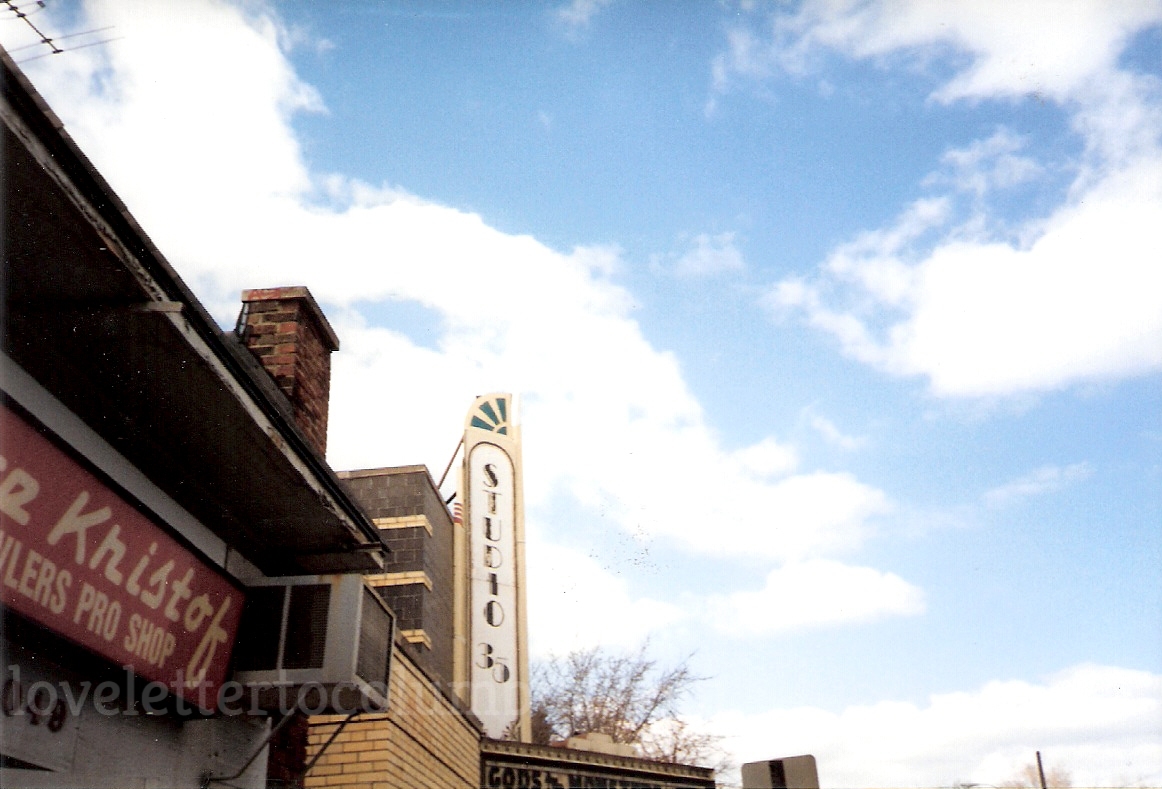
A new co-worker I’ve only recently met – and actually, am training, laughable though this may seem – is the first person to clue me in on Studio 35. And maybe her true calling will somebody be in advertising. Because the way she’s drumming up its merits, I basically want to chuck aside this lunchtime shift and race over there right now. Instead, I am stuck with daydreaming.
A dilapidated dive tavern, she says, in the heart of church solemn Clintonville, which just happens to hoist a full size movie screen against its back wall, which buries the whole tacky Flickers franchise beneath a mound of shame. Studio 35, surely I stumble into your dim, smoky aisles some evening on my own accord, with or without the intervention of this righteous nymph, surely I wrap popcorn buttered fingers around a frosted mug of ale while seated on a barstool I can’t even see. Conning roommates along for the freakshow thrill, we’ll crane our necks to imbibe the latest reel of film, as vicious cramps creep slowly up these same necks, absolved only through the continued application of still more alcohol. Surely, o holy tabernacle, surely.
Shortly hereafter, a few of us manage to check it out. Studio 35 collides against the eastern rim of Clintonville’s dry district, able to serve alcohol by a matter of feet. Dating from the 1930s, this building features a wedge shaped marquee, dangling above the street where we park, and a glass bubble ticket window expanding out into the sidewalk. Each night, three paltry dollars buy a triple bill of second run features, the most reasonable admission in town. And while we’ve missed the first of these, whatever it was, the heavily hyped horror flick Scream awaits us, followed by some unknown comedy titled SubUrbia.
Here, the movies themselves might garner lowest priority. We’re five minutes late for the second leg of this triad, yet it scarcely matters, for the main attraction is a dark, smoky tavern occupying the theater’s back third, allowing full view of a regulation size screen. Beyond, rows upon rows of traditional seating flesh out the remaining space, but we don’t give those small, uncomfortable chairs a second glance. Stools around the bar, they speak to us. Falling into line astride them, we inspect their sizable array of bottled beer, ultimately settle upon some reasonably priced drafts. The bartender also brings forth a menu from the relocated Papa Joe’s, which has this unique arrangement with Studio 35, which operates next door in a tiny, lifeless pizza shop galaxies removed from its once riotous, now legendary, campus institution. Sympathizing with their plight, we order a large pepperoni. Our heads crook sidelong to enjoy the show.
With equal frequency, our heads also tilt in the opposite direction. Lured by her salacious rasp, the blonde at the bar’s distant end has us captive. A voice more lewd, animalistic, than any we’ve ever heard, she leans on the bartender’s every word, responds in kind with her own. Punctuates each offering with a husky, kittenish chuckle. Damon, for one, chain smokes anxiety away watching her, as if aware he can’t match the seductive film noir cool of her own graceful drags, lazy exhalations, and won’t even bother trying. Just as we’re certain that, with every chair between her and us resolutely unoccupied, our drooling leers must hang all too obvious in the aquamarine glow of the small, sad fishtank behind this bar.
“I swear,” Damon says, “I could sit here for hours and jack off just listening to her talk.”
At intermission, having dusted off the pizza, we stand to stretch and look around. A row of booths line one side wall, and then the lobby, where a flimsy film of red carpet daubs the ground, worn raw by week after week of cutrate attractions. Smokers head outside now to mingle fresh air with their flaming butts, but we interrogate the contour, from the countertop popcorn machine to the pair of 1980s video games, one on each wing, to the movie posters lining every square inch of these walls. The profiles, titles, and slogans adorning these advertisements are cut out, overlapped, stacked atop one another with impressive originality, and taped on balloons stream famous soundbites from select actors’s mouths, so that even a trip to the restroom stall requires facing off against Clint Eastwood and one of his timeless lines.
I envision this as a hideout you’d visit alone to disappear for a few hours, inviting and anonymous. Contrasting so distinctly with the tacky, fading prefabrication of other quote unquote independent operations, this kind of dogeared character you just can’t fake.

Of course, these days you can’t smoke at Studio 35, either, because you can’t smoke anywhere. I’ve never been a smoker, yet I believe that this law did chop off one leg of the tripod from this place’s charm. Even so, it has become a rite of passage through the years. Chances are you’ve brought every girl dated to this place exactly once, and chances are they hated it. A couple of times you’ve even bothered to drift down and sit in the actual theater. In the days before internet, without a paper handy, you would call and listen to the recording delivered by some jaunty sounding fellow, one whom I never met – even now, any time I see a sign for Weber Road, I think of it in the almost singsong manner he pronounced it on those recordings, and often say it aloud: Weber Row-uhhhhd!
During the height of Studio 35 mania, our presence here became so predictable that one friend dropped in, believing on a wild hunch that he might find the rest of us here, and he was correct. I must admit I haven’t attended in way too long. As always, Columbus’s oldest, best indie theater keeps itself afloat screening a nice mix of mainstream and independent fare, and here’s to hoping it continues to do so until my next visit.
Opening clear back in 1938 as the Indianola Theatre, it eventually switched over to its current name – although I’m not sure about the meaning behind this Studio 35 moniker. Whatever the case, a more significant development occurs in 1972, when owner Frank Marzetti installs draft beer, thereby making it the first movie theater in the nation to do so. John Conti bought it in 1995, and did a great job revitalizing the theater, from adding a new curved screen in the late 1990s, experimenting with karaoke at the bar, working out a delivery deal with the Papa Joe’s pizza place next door, and revamping the format to (mostly) a double feature of just slightly not-quite-new movies. With the occasional art house, retro, or Rocky Horror and otherwise themed nights thrown into the mix, of course. I believe they are on their third ownership group at this point, but could be wrong about that.
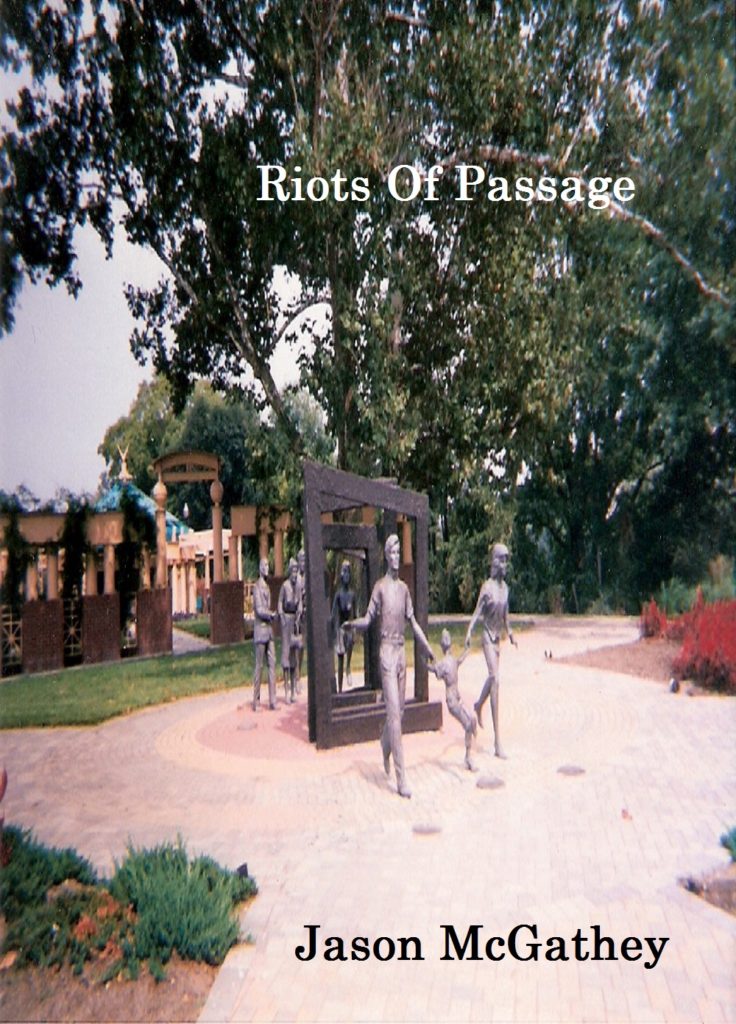
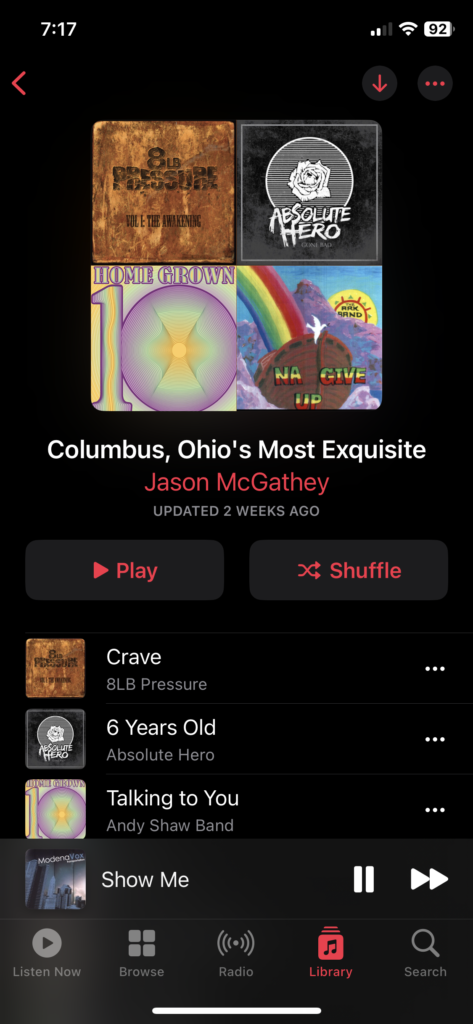

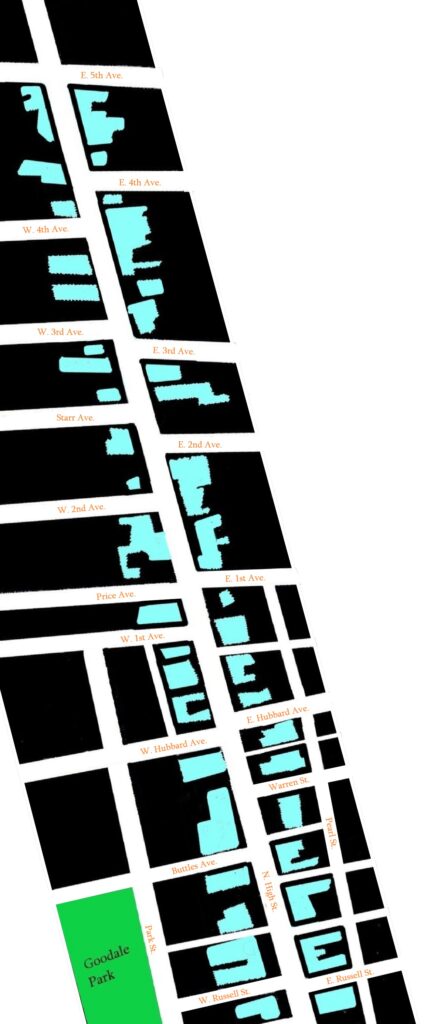
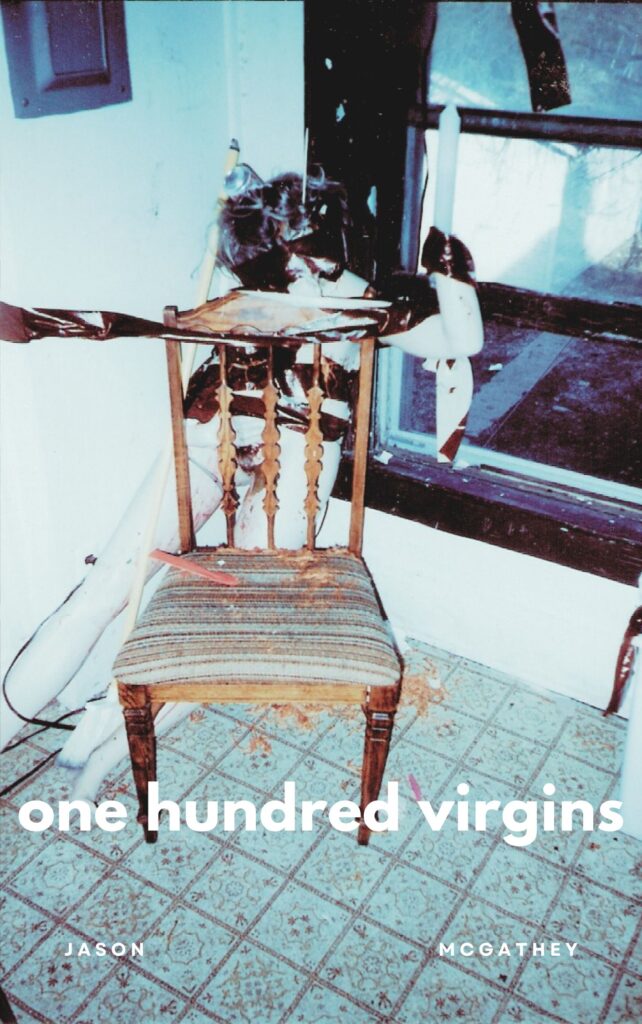



Thank you for this callback to some great times.
1974 – Beer and cigarettes while watching Grand Hotel and Animal Crackers.
If your date did like this place then she wasn’t worthy of another date. Us intellectual and grungy guys had standards…
Thanks Curtis! I have updates to post too, whenever the spirit moves me – the interior looks considerably different nowadays. But it still has most of that same old charm. I like your idea about the date “litmus test!” Perhaps I should have considered that myself. Now that I think about it, your theory certainly seems to hold quite a bit of water!